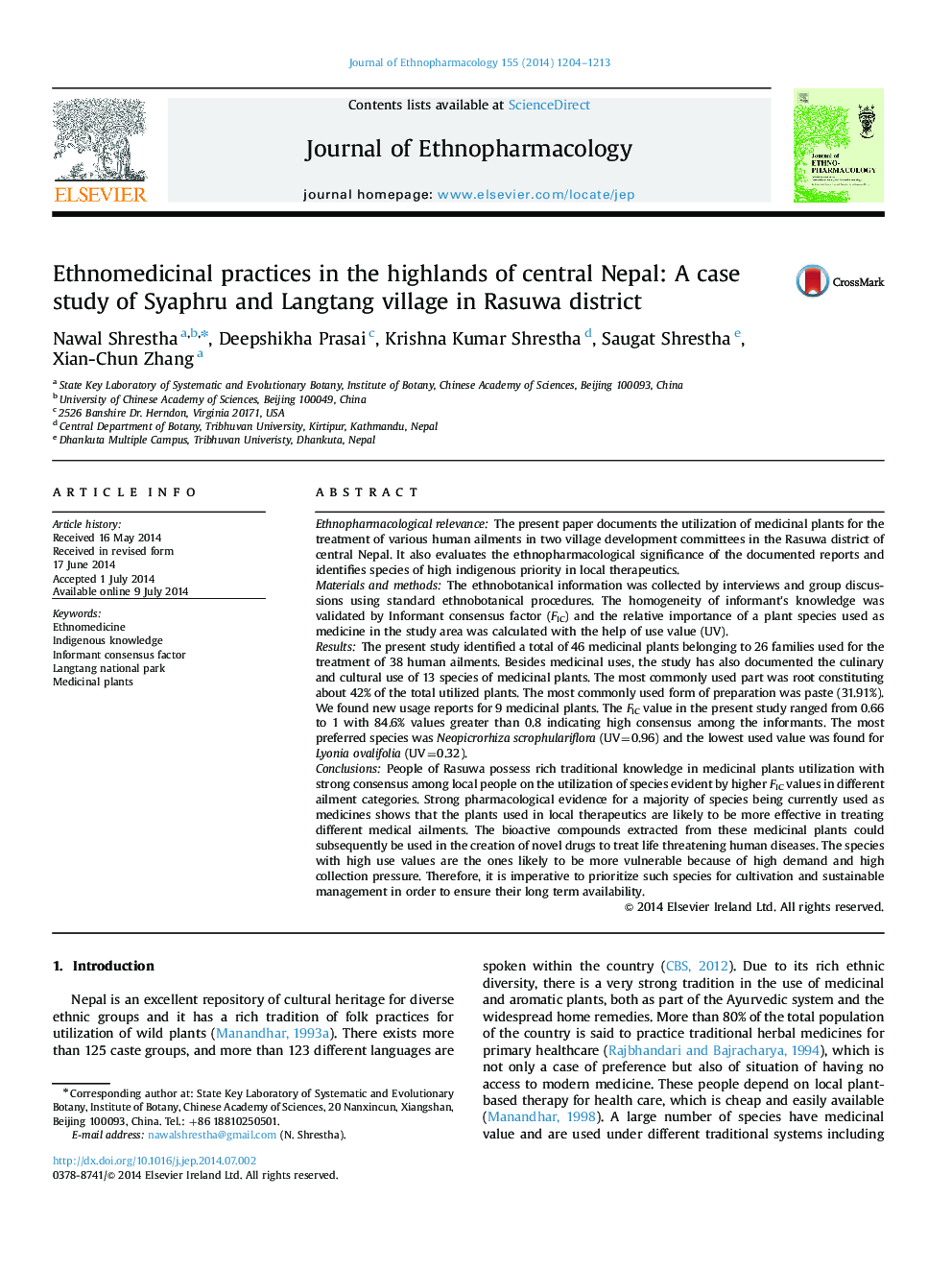| کد مقاله | کد نشریه | سال انتشار | مقاله انگلیسی | نسخه تمام متن |
|---|---|---|---|---|
| 5836104 | 1123938 | 2014 | 10 صفحه PDF | دانلود رایگان |
Ethnopharmacological relevanceThe present paper documents the utilization of medicinal plants for the treatment of various human ailments in two village development committees in the Rasuwa district of central Nepal. It also evaluates the ethnopharmacological significance of the documented reports and identifies species of high indigenous priority in local therapeutics.Materials and methodsThe ethnobotanical information was collected by interviews and group discussions using standard ethnobotanical procedures. The homogeneity of informant׳s knowledge was validated by Informant consensus factor (FIC) and the relative importance of a plant species used as medicine in the study area was calculated with the help of use value (UV).ResultsThe present study identified a total of 46 medicinal plants belonging to 26 families used for the treatment of 38 human ailments. Besides medicinal uses, the study has also documented the culinary and cultural use of 13 species of medicinal plants. The most commonly used part was root constituting about 42% of the total utilized plants. The most commonly used form of preparation was paste (31.91%). We found new usage reports for 9 medicinal plants. The FIC value in the present study ranged from 0.66 to 1 with 84.6% values greater than 0.8 indicating high consensus among the informants. The most preferred species was Neopicrorhiza scrophulariflora (UV=0.96) and the lowest used value was found for Lyonia ovalifolia (UV=0.32).ConclusionsPeople of Rasuwa possess rich traditional knowledge in medicinal plants utilization with strong consensus among local people on the utilization of species evident by higher FIC values in different ailment categories. Strong pharmacological evidence for a majority of species being currently used as medicines shows that the plants used in local therapeutics are likely to be more effective in treating different medical ailments. The bioactive compounds extracted from these medicinal plants could subsequently be used in the creation of novel drugs to treat life threatening human diseases. The species with high use values are the ones likely to be more vulnerable because of high demand and high collection pressure. Therefore, it is imperative to prioritize such species for cultivation and sustainable management in order to ensure their long term availability.
360
Journal: Journal of Ethnopharmacology - Volume 155, Issue 2, 11 September 2014, Pages 1204-1213
